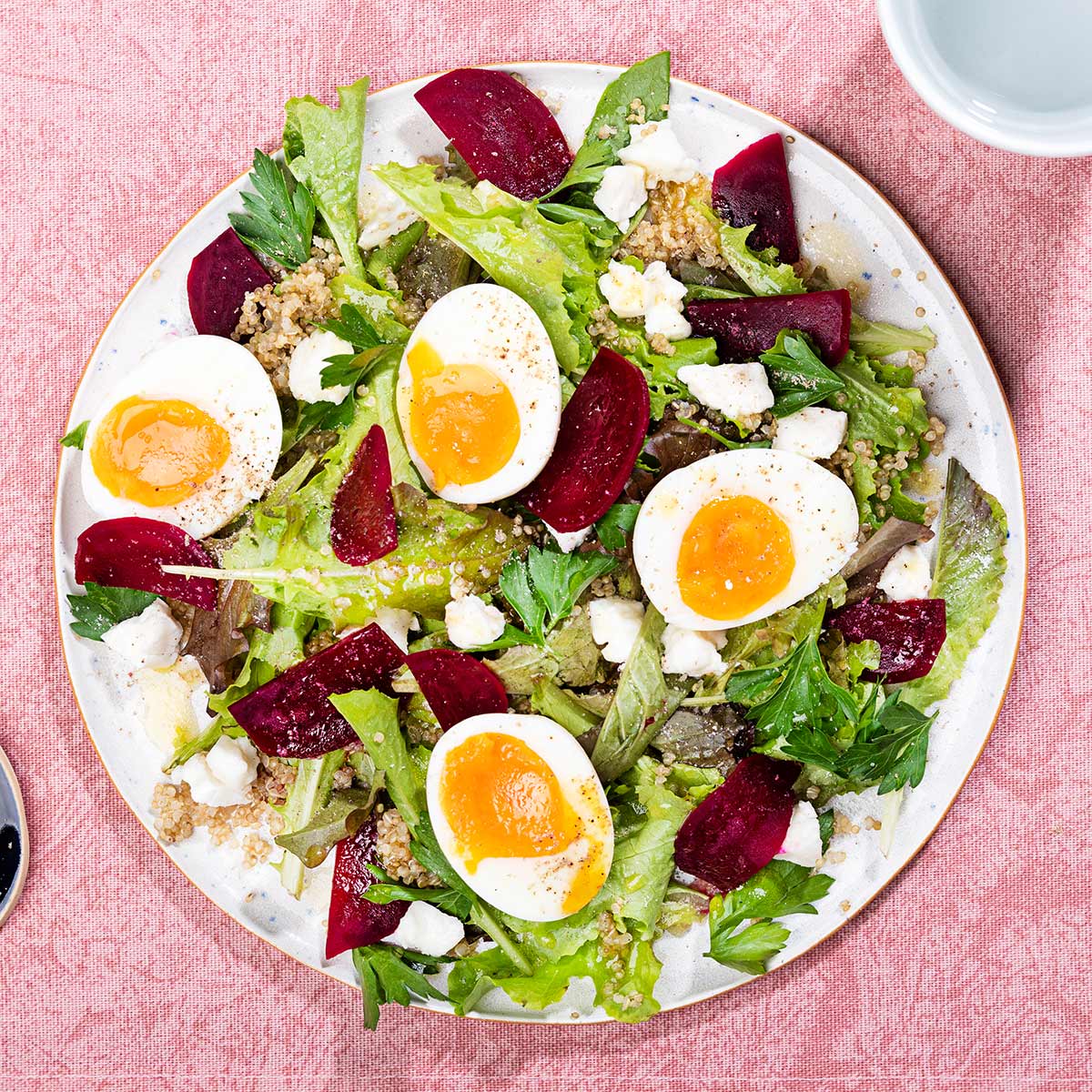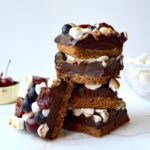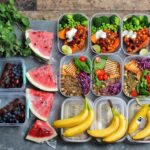Embark on a culinary adventure with a collection of vibrant, gluten-free vegetarian recipes designed to tantalize taste buds and nourish the soul. From quick weekday lunches to impressive special occasion meals, this guide unveils a world of flavor and creativity, proving that delicious and healthy eating doesn’t require compromise. Discover the secrets to crafting satisfying dishes using an array of fresh, wholesome ingredients, effortlessly adapting recipes to suit various dietary needs and preferences. Prepare to be inspired by innovative techniques and stunning presentation ideas, transforming your meals into unforgettable culinary experiences.
This comprehensive guide explores the diverse world of gluten-free vegetarian cooking, offering a wealth of information, including detailed recipes, nutritional insights, ingredient spotlights, and practical tips for overcoming common challenges. Whether you’re a seasoned cook or a kitchen novice, you’ll find accessible instructions and inspiring ideas to elevate your vegetarian cooking to new heights. Prepare to expand your culinary horizons and delight in the boundless possibilities of gluten-free vegetarian cuisine.
Recipe Variety
Gluten-free vegetarian cooking offers a vibrant world of flavors and textures, catering to diverse dietary needs and preferences. From quick weeknight meals to impressive dishes for special occasions, the possibilities are endless. This section explores five diverse gluten-free vegetarian recipes, highlighting their unique culinary techniques and nutritional profiles.
Five Diverse Gluten-Free Vegetarian Recipes
The following recipes demonstrate the versatility of gluten-free vegetarian cuisine, showcasing options for various occasions and tastes.
- One-Pan Roasted Mediterranean Vegetables with Quinoa: This vibrant dish is perfect for a quick and healthy weeknight meal. Imagine tender chunks of bell peppers, zucchini, eggplant, and red onion, roasted to perfection with a drizzle of olive oil, lemon juice, and herbs like oregano and thyme. The earthy flavors of the vegetables are beautifully complemented by the fluffy quinoa, providing a complete protein source. This recipe is ideal for those seeking a simple, nutritious, and flavorful meal. The bright colors and fresh ingredients make it visually appealing as well.
- Creamy Tomato and Spinach Lasagna (Gluten-Free): For a comforting and satisfying meal, this lasagna utilizes gluten-free lasagna noodles, layers of creamy ricotta cheese (or a vegan alternative), vibrant spinach, and a rich tomato sauce. The layers create a beautiful visual effect, with the green spinach contrasting against the red sauce and the creamy ricotta. This recipe is perfect for a family dinner or a special occasion, offering a familiar comfort food with a healthy twist. The rich flavors are sure to please a wide range of palates.
- Black Bean Burgers with Avocado Crema: These flavorful burgers are a fantastic option for a quick and satisfying lunch or a casual dinner. The black beans provide a hearty base, seasoned with cumin, chili powder, and a touch of lime. The avocado crema adds a creamy, cool counterpoint to the earthy beans. The burgers can be served on gluten-free buns or enjoyed as patties. The vibrant green of the avocado against the dark beans creates a visually striking dish. This recipe is perfect for those seeking a plant-based protein source with a southwestern flair.
- Mushroom Wellington (Gluten-Free): For a truly impressive special occasion dish, a mushroom wellington is a showstopper. A mixture of earthy mushrooms, herbs, and shallots is encased in a flaky, gluten-free puff pastry. The rich, savory filling is beautifully complemented by the crisp, buttery pastry. This recipe requires a bit more time and effort, but the result is a dish that is both elegant and delicious. The contrasting textures and rich flavors make it a memorable culinary experience. The golden-brown pastry provides a visually appealing finish.
- Spicy Peanut Noodles with Tofu: This quick and easy noodle dish is perfect for a weeknight meal or a light lunch. Gluten-free rice noodles are tossed in a vibrant peanut sauce with a kick of chili garlic sauce. Crispy pan-fried tofu adds a satisfying protein source. The dish’s bright colors and the glossy peanut sauce make it visually appealing. This recipe is ideal for those who enjoy bold flavors and spicy food. The contrasting textures of the noodles and tofu provide an enjoyable eating experience.
Nutritional Comparison of Recipes
The following table provides a comparison of the approximate nutritional values per serving for the five recipes. Note that these values are estimates and can vary based on specific ingredients and portion sizes.
| Recipe | Calories (approx.) | Protein (approx. grams) | Fiber (approx. grams) |
|---|---|---|---|
| One-Pan Roasted Vegetables with Quinoa | 350 | 15 | 8 |
| Creamy Tomato and Spinach Lasagna (Gluten-Free) | 450 | 20 | 6 |
| Black Bean Burgers with Avocado Crema | 400 | 18 | 10 |
| Mushroom Wellington (Gluten-Free) | 500 | 12 | 5 |
| Spicy Peanut Noodles with Tofu | 300 | 15 | 4 |
Culinary Techniques
Each recipe utilizes unique culinary techniques to enhance its flavor and texture. The roasted vegetable dish employs simple roasting techniques to bring out the natural sweetness of the vegetables. The lasagna utilizes layering techniques to create a visually appealing and flavorful dish. The black bean burgers showcase the versatility of beans as a protein source. The mushroom wellington demonstrates advanced pastry techniques, while the peanut noodles highlight the use of bold sauces and contrasting textures. These diverse techniques demonstrate the breadth of possibilities within gluten-free vegetarian cooking.
Ingredient Focus

The beauty of gluten-free vegetarian cooking lies in the abundance of naturally gluten-free ingredients brimming with flavor and nutritional benefits. Exploring these ingredients unlocks a world of culinary possibilities, allowing for creative and healthy dishes that cater to diverse dietary needs and preferences. This section will delve into some key players in the gluten-free vegetarian kitchen, highlighting their versatility and nutritional value.
Three Key Gluten-Free Vegetarian Ingredients
Quinoa, lentils, and sweet potatoes form a powerhouse trio, each offering unique nutritional profiles and culinary applications. Quinoa, a complete protein, boasts all nine essential amino acids and is rich in fiber, iron, and magnesium. Its slightly nutty flavor and fluffy texture make it a versatile base for salads, bowls, and even desserts. Lentils, another excellent source of protein and fiber, contribute a hearty texture to soups, stews, and veggie burgers. Their earthy flavor pairs well with a variety of spices and herbs. Sweet potatoes, packed with beta-carotene (which converts to vitamin A), vitamin C, and fiber, offer a naturally sweet and creamy texture, perfect for roasting, mashing, or incorporating into curries and baked goods. Imagine a vibrant quinoa salad with roasted sweet potatoes and spiced lentils – a colorful and nutritious meal in a single bowl.
A Broader Spectrum of Gluten-Free Vegetarian Ingredients
A wide array of ingredients are readily available for creating delicious and nutritious gluten-free vegetarian meals. The following list categorizes these ingredients for easier understanding and culinary planning.
- Grains: Quinoa, brown rice, millet, amaranth, buckwheat (technically a seed, but used like a grain)
- Legumes: Lentils (red, green, brown), chickpeas, black beans, kidney beans, pinto beans
- Vegetables: Sweet potatoes, potatoes, broccoli, cauliflower, carrots, spinach, mushrooms, zucchini, bell peppers
- Nuts & Seeds: Almonds, walnuts, chia seeds, flax seeds, sunflower seeds, pumpkin seeds
- Fruits: Apples, bananas, berries (strawberries, blueberries, raspberries), oranges
- Other: Tofu, tempeh, nutritional yeast
Addressing Challenges with Gluten-Free Ingredients
While many gluten-free ingredients are readily adaptable, some present unique challenges. For instance, certain gluten-free flours (like rice flour) can sometimes produce a slightly gummy or crumbly texture in baked goods. This can be mitigated by blending different gluten-free flours (e.g., rice flour with almond flour or tapioca starch) to achieve the desired consistency. Another challenge can be the taste; some gluten-free alternatives might lack the familiar taste and texture of their gluten-containing counterparts. Experimenting with spices, herbs, and other flavor enhancers can significantly improve the taste profile of gluten-free dishes. For example, adding a touch of xanthan gum to gluten-free baked goods can improve elasticity and prevent crumbliness, while using flavorful broths and stocks can enhance the taste of gluten-free soups and stews. The key is to experiment and find the combinations that best suit your palate and the specific recipe.
Addressing Common Gluten-Free and Vegetarian Cooking Concerns
Creating delicious and satisfying gluten-free vegetarian meals requires careful consideration of texture, flavor, and nutritional balance. Many common pitfalls can be easily avoided with a little knowledge and planning. This section will address these challenges and provide practical solutions to ensure your gluten-free vegetarian culinary adventures are consistently successful.
Gluten-free vegetarian cooking presents unique challenges compared to traditional cooking. The absence of gluten, a protein that provides structure and elasticity, necessitates careful selection of alternative ingredients and cooking techniques. Similarly, ensuring a vegetarian meal is both flavorful and filling requires strategic use of protein sources and flavorful additions.
Gluten-Free Flour Characteristics and Substitutions
Understanding the properties of different gluten-free flours is crucial for successful baking. Each flour offers a unique texture and flavor profile, impacting the final product significantly. For instance, rice flour tends to produce a delicate, slightly crumbly texture, while almond flour lends a rich, nutty flavor and denser consistency. Potato starch adds lightness and fluffiness, but often needs to be combined with other flours for optimal results. The following table summarizes the key characteristics of some common gluten-free flours:
| Flour Type | Texture | Flavor | Best Uses |
|---|---|---|---|
| Rice Flour | Delicate, crumbly | Mild, slightly sweet | Cakes, cookies (often blended with other flours) |
| Almond Flour | Dense, moist | Nutty, rich | Muffins, quick breads, cookies |
| Potato Starch | Light, fluffy | Neutral | Cakes, cookies (used in combination with other flours) |
| Tapioca Starch | Chewy, slightly gummy | Neutral | Binders in sauces, thickening agent |
| Buckwheat Flour | Slightly gritty | Nutty, earthy | Pancakes, crepes |
Often, a blend of gluten-free flours is necessary to achieve the desired texture and result. Experimentation is key! A common blend uses a combination of rice flour for lightness, almond flour for richness, and tapioca starch for binding. The ratios can be adjusted based on the specific recipe and desired outcome.
Maintaining Flavor and Satisfaction in Gluten-Free Vegetarian Dishes
Creating flavorful and satisfying gluten-free vegetarian meals hinges on strategic ingredient selection and cooking techniques. The absence of gluten necessitates a focus on alternative methods for achieving texture and binding. For example, instead of relying on gluten for binding in veggie burgers, consider using mashed beans or lentils. Adding umami-rich ingredients such as mushrooms, nutritional yeast, or soy sauce enhances the overall depth of flavor, making the dish more satisfying.
Using a variety of herbs and spices is crucial for creating complex and exciting flavor profiles in gluten-free vegetarian cuisine. Don’t be afraid to experiment!
Consider this simple recipe for flavorful gluten-free vegetarian lentil loaf: Sautéed onions, carrots, and celery are combined with cooked brown or green lentils, breadcrumbs (gluten-free, of course!), chopped walnuts, and a blend of herbs like thyme, rosemary, and sage. The mixture is seasoned generously with salt, pepper, and a touch of smoked paprika for depth. This mixture is formed into a loaf, baked until firm, and served with a vibrant tomato-based sauce. The lentils provide protein and heartiness, while the vegetables and herbs add a burst of freshness and flavor. The gluten-free breadcrumbs help bind the loaf together, maintaining a satisfying texture. The result is a hearty, flavorful, and completely satisfying vegetarian main course.
Unleash your inner chef and embrace the joy of creating delicious, healthy, and inclusive meals with this ultimate guide to gluten-free vegetarian cooking. From the vibrant colors of perfectly plated pasta dishes to the comforting warmth of a hearty chili, each recipe is a testament to the power of fresh ingredients and imaginative culinary techniques. Remember, the key to successful gluten-free vegetarian cooking lies in understanding the unique properties of various ingredients and mastering a few essential techniques. With a little practice and a dash of creativity, you can effortlessly craft meals that are both visually stunning and incredibly satisfying, leaving everyone at the table wanting more. So, gather your ingredients, don your apron, and prepare to embark on a culinary journey that will delight your senses and nourish your body.
Question Bank
What are some good substitutes for gluten-free flour in baking?
Many gluten-free flours exist, each with unique properties. Rice flour is light, almond flour adds richness, and oat flour provides a hearty texture. Experiment to find your favorite!
How can I make sure my gluten-free vegetarian dishes are flavorful?
Focus on bold spices, fresh herbs, and flavorful vegetable broths. Don’t be afraid to experiment with different flavor combinations to create depth and complexity.
Are all vegetarian dishes automatically gluten-free?
No, many vegetarian dishes contain gluten-containing ingredients like soy sauce (some brands), wheat-based pasta, or breadcrumbs. Always check ingredient labels.
Can I freeze gluten-free vegetarian meals?
Yes, many gluten-free vegetarian meals freeze well. Allow them to cool completely before freezing in airtight containers. Reheat thoroughly before serving.


